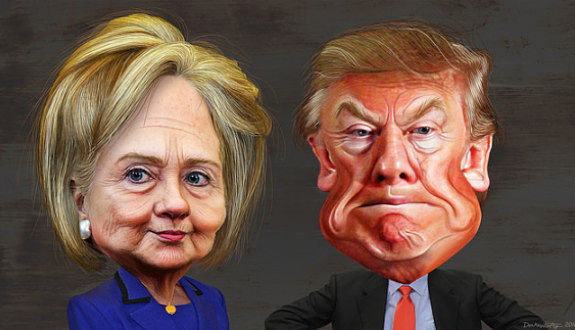The 2016 Campaign, A Cornucopia of LSAT Flaws
- by
- Nov 07, 2016
- News
- Reviewed by: Matt Riley


Killmekillmekillmekillmekillme.
As this rabid, flea-bitten cur of a presidential election comes mercifully to an end, we should try to find something — anything! — positive to come out of it. So, here is my feeble attempt to bind up the nation’s wounds: We got to see a record-breaking amount of logical fallacies, and now there are concrete examples to think of when you’re trying to get all the flaws down for the LSAT.
This list is about one millionth of the poor reasoning we saw on the campaign trail, but it’ll have to do for now.
Ad Hominem
This flaw is basically the main point of Donald Trump’s candidacy. The Ad Hominem flaw, for those who don’t know, is when someone disputing another’s argument attacks the person, rather than the argument. From the (lame) nicknames — Crooked Hillary, Lyin’ Ted, Little Marco, Goofy Elizabeth Warren/Pocahontas — to fat shaming Alicia Machado, to asserting that a federal judge born in Indiana can’t be fair because “he’s a Mexican,” Trump’s most basic unit of persuasion is to attack people for their demographic markers or character traits rather than to debate the merits and drawbacks of their policies.
Hillary Clinton is not immune to this, either. Her comment that most of Donald Trump’s supporters fit neatly into a “basket of deplorables” was certainly a personal attack.
Absence of Evidence
This little guy popped up most recently in the rabid speculation on both sides about the criminality or lack thereof that the FBI would find investigating Hillary’s emails. Hillary treated failure to prove criminal wrongdoing on her part as evidence that there was no wrongdoing. Sorry, Hills! Doesn’t work like that.
Perception vs. Reality
This is where someone treats opinion as though it were legitimate evidence of fact. Trump’s repeated insistence that the election is rigged — and a host of other baseless assertions he’s made — are often backed up by his claim that, “People are saying…” or “I’ve heard…” or “Everyone knows that…” None of this is evidence of anything. If I say the moon is made of cheese, and someone else repeats that, it qualifies as evidence under the “people are saying” doctrine of evidence Trump sports. Nope. People say all sorts of things, a lot of which are untrue or even nonsense.
Modality
Let’s come back around to the “basket of deplorables” kerfuffle. There is evidence to believe that some (defined as >0%) of Trump’s supporters are deplorable. There’s the guy chanting “Jew-S-A!” A cottage industry of paraphernalia denigrating Hillary Clinton has popped up around Trump events.
Nevertheless, Hillary said that most (defined as >50%) of Trump’s supporters were deplorable. Making such a determination would require showing malfeasance on the part of literally millions of people. Wrong.
Straw Man
While this flaw rarely shows up on the LSAT, it was a common staple of this campaign. The Straw Man fallacy is where a person mischaracterizes his or her opponent’s argument, making it easier to knock down that argument.
Trump often accused Hillary of wanting to repeal the Second Amendment. Maybe that’s where her heart is, but her official positions is no such thing. She’s in favor of stronger gun control measures, but that’s no more wanting to repeal the Second Amendment than agreeing with punishment for shouting “Fire!” in a crowded theater is for repeal of the First Amendment.
It’s hard to know whether Hillary is guilty of this because Trump’s positions on issues can change from moment to moment. She’s alleged that Trump wants to punish women for having abortions. He’s said as much, but he also changed that position. She continues to say that he supports punishment for women who have abortions. I’ll let you decide whether she ought to attack only Trump’s position du jour.
Got others you’d like to share? Put ’em in the comments.
Search the Blog

Free LSAT Practice Account
Sign up for a free Blueprint LSAT account and get access to a free trial of the Self-Paced Course and a free practice LSAT with a detailed score report, mind-blowing analytics, and explanatory videos.
Learn More
Popular Posts
-
logic games Game Over: LSAC Says Farewell to Logic Games
-
General LSAT Advice How to Get a 180 on the LSAT
-
Entertainment Revisiting Elle's LSAT Journey from Legally Blonde








